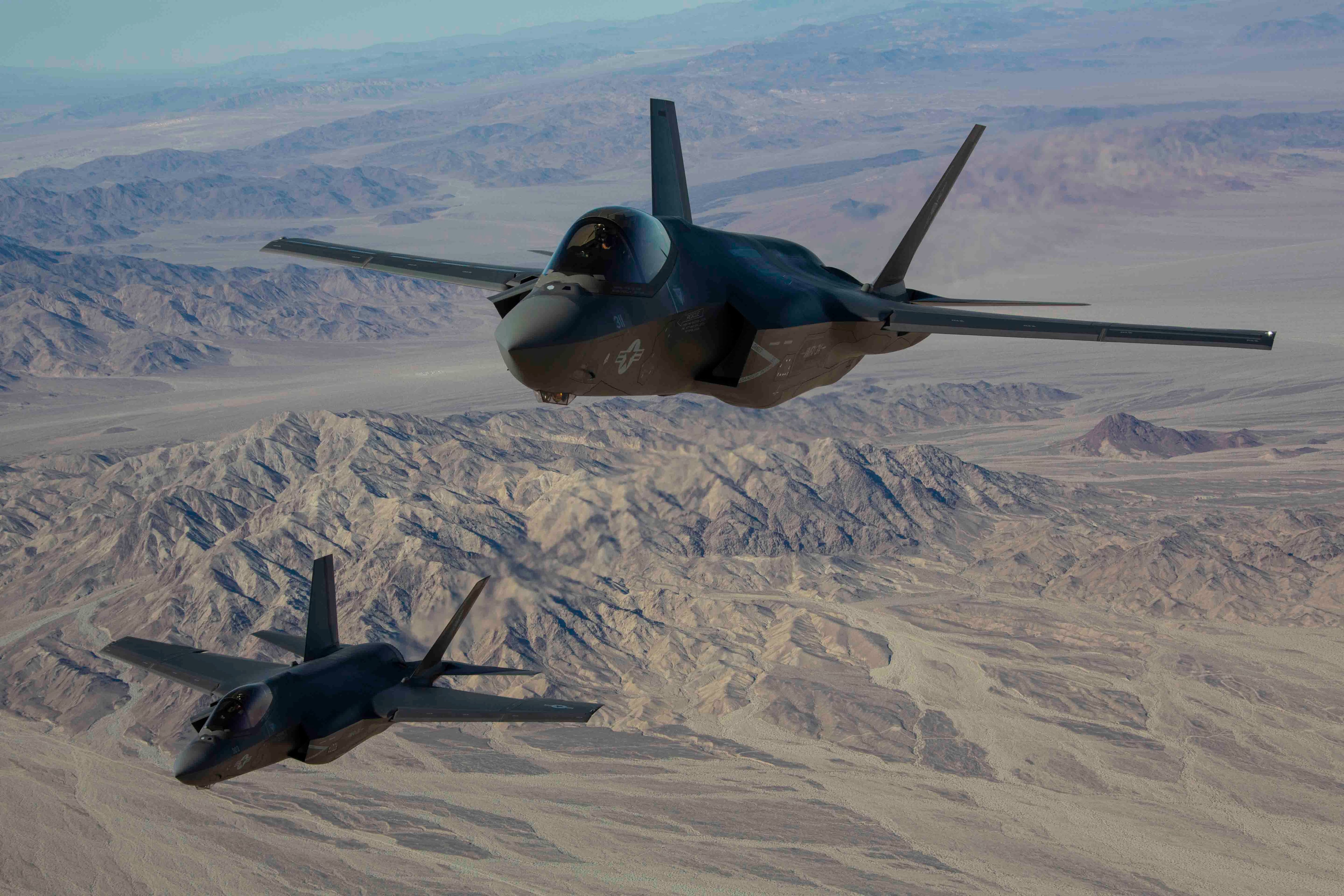While the Marine Corps beat the Navy to having a deployment-ready F35C Joint Strike Fighter Squadron, the long-term future for the Corps’ F-35 fleet is in question.
That’s because a limited number of F-35 pilots in the ranks, along with more focus on increasing the unmanned aerial piece of Marine aviation pie, has spurred debate in recent years about the service’s F-35 needs.
In July the Marine Corps hit its stride with a certified and deployable F-35C, or carrier variant, squadron. That honor went to the Marine Fighter Attack Squadron VMFA 314 out of Marine Corps Air Station, Miramar, California.
RELATED

Its deployment is expected in 2022.
The “Black Knights” received F-35Cs in January 2020 and had them up with a ready force within 18 months, according to a Marine Corps statement.
But as those crews were kicking tires and lighting fires, the overall pilot shortage in the F-35 space also was pushing higher command, including the top Marine Commandant Gen. David Berger to tell Congress it was willing to cut its F-35 order.
Berger remained a supporter of the capabilities the jet could bring to the future fight, but was realistic with Congress when testifying in 2020.
“But I’m signaling to the industry, we have to be prepared to adjust as the operating environment adjusts,” he said. “Right now, the program of record stays the same, but we will — we must — adapt to the adversary and we must adapt to the operating environment that we’re challenged with being in.”
This is an excerpt from “19 Things Marines Need To Know For 2022,” in the January print edition of Marine Corps Times.
Todd South has written about crime, courts, government and the military for multiple publications since 2004 and was named a 2014 Pulitzer finalist for a co-written project on witness intimidation. Todd is a Marine veteran of the Iraq War.





